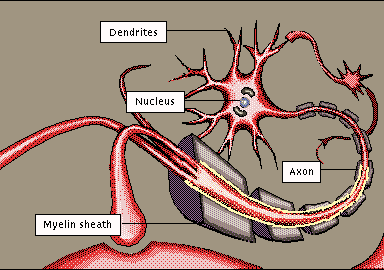New Key to Learning and Memory?
 Not only is Ghrelin a hot topic among Yale University memory researchers, but Harvard Medical School researchers have identified another possibly key hormone involved in control of memory--myocyte enhancer factor 2 (MEF2). The research appears in the latest issue of Science.
Not only is Ghrelin a hot topic among Yale University memory researchers, but Harvard Medical School researchers have identified another possibly key hormone involved in control of memory--myocyte enhancer factor 2 (MEF2). The research appears in the latest issue of Science.The uncovering of the MEF2 pathway and its genetic switch helps fill in a theoretical blank in neurobiology, but what excites the researchers are the potential implications for the clinic. "Changes in the morphology of synapses could turn out to be very important in a whole host of diseases including neurodegenerative as well as psychiatric disorders," said Azad Bonni, MD, PhD, HMS Associate Professor of Pathology who, with colleagues, authored one of the papers. Michael Greenberg, PhD, HMS Professor of Neurology at Children’s Hospital Boston, who led the other team, believes that the MEF2 pathway could play a role in autism and other neurodevelopmental diseases.
The protein works by either activating or actively repressing target genes. In working on a group of neurons in the developing rat cerebellum, HMS research fellow in pathology Aryaman Shalizi, and HST medical student Brice Gaudilliere along with Bonni and their colleagues, found the MEF2 repressor promoted synaptic differentiation. In a separate study, Steven Flavell, a graduate student in neurology, Greenberg, and their colleagues found the MEF2 activator inhibited the growth of dendritic spines in the rat hippocampus, an area of the brain associated with memory and learning. Flavell, and also the Bonni team, found the activated, or dendrite-whittling, form of MEF2 comes on in response to increased neuronal activity.
That MEF2 activation leads to the inhibition of synapse formation, makes sense in light of what is known about the nervous system. In memory and learning, as well as development, activity leads to a sculpting, or cutting away, of synapses. What may be more surprising is the way activity causes MEF2 to switch from repressor to activator.
What Bonni and his colleagues found is that molecules modify a particular spot on MEF2, and transform it into a repressor. By removing the modification, known as sumoylation, MEF2 becomes an activator.
MEF2 was first identified in neurons in the 1990s. In 1999, Zixu Mao, then an HMS research fellow, working with Bonni, Greenberg, and colleagues showed that MEF2 promotes neuronal survival but little else was known about the protein. Though they knew that MEF2 comes in activated and repressor forms, neither team knew how exactly the protein works. They suspected it might play a role in regulating activity-dependent synaptic remodeling and set out to find out if that was the case.
For those interested, you can read the rest of the release here.
It is likely that MEF2 is particularly active in early childhood, when the neuronal tree is being "pruned" most actively. But given that neuronal plasticity continues well into adulthood, this particular peptide may be another one to watch, in terms of spawning treatments for dementia.

0 Comments:
Post a Comment
“During times of universal deceit, telling the truth becomes a revolutionary act” _George Orwell
<< Home